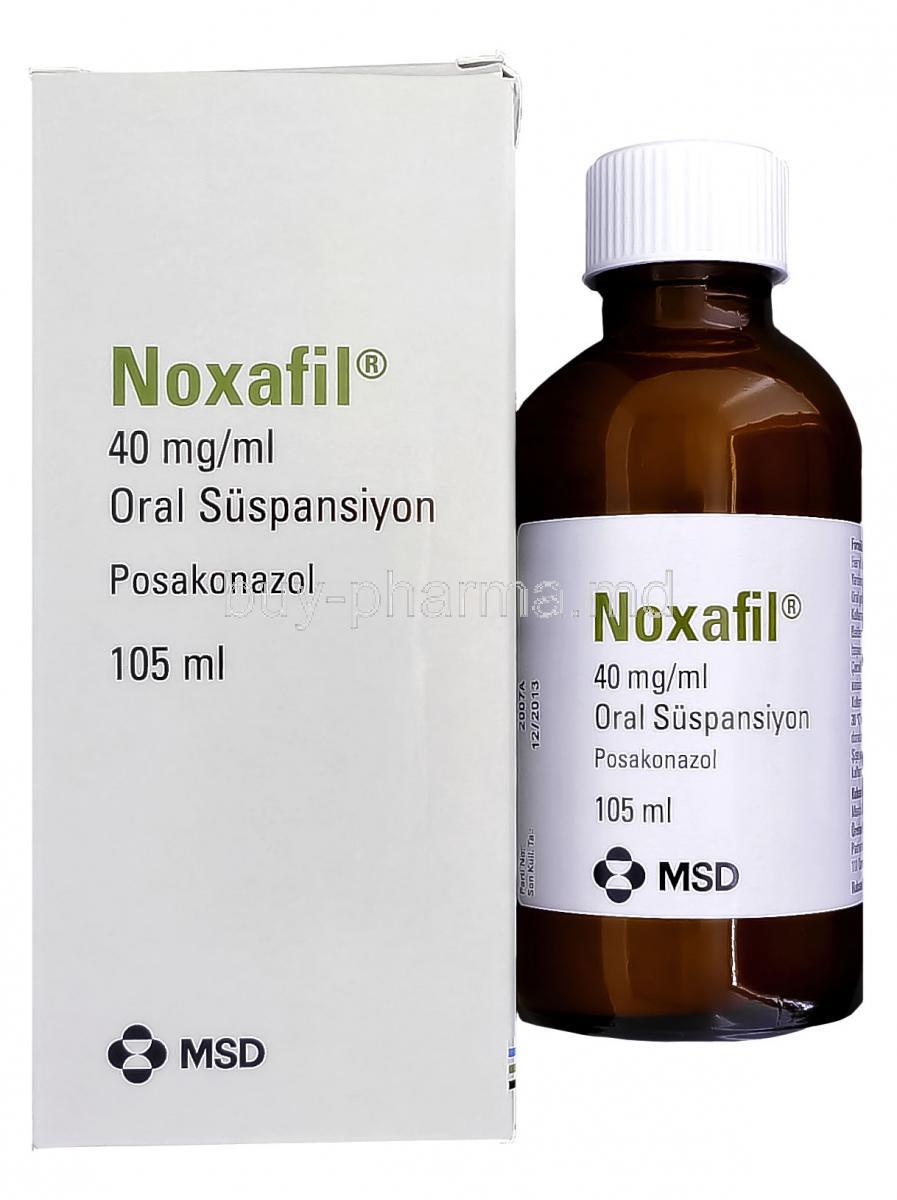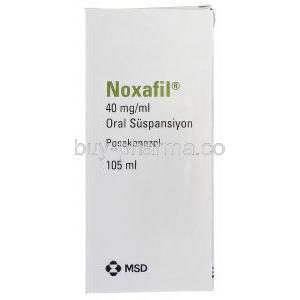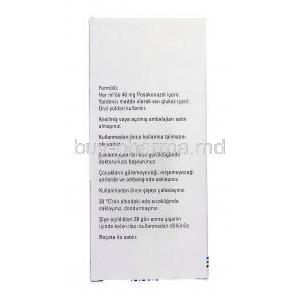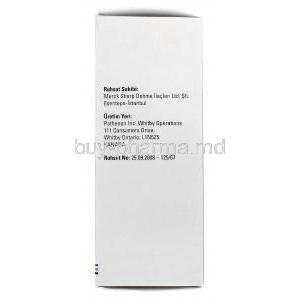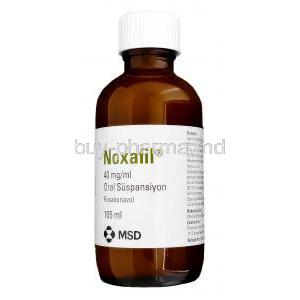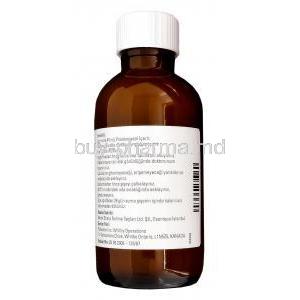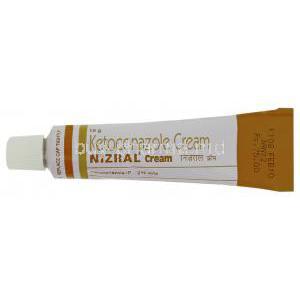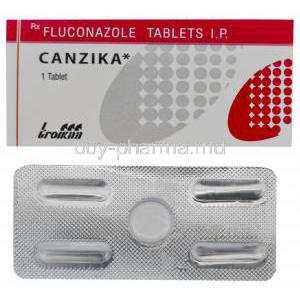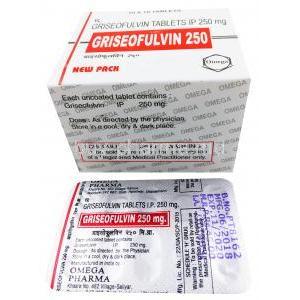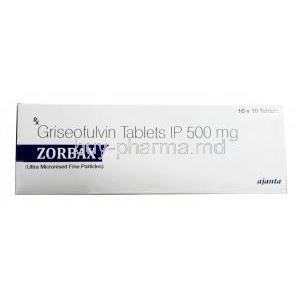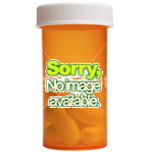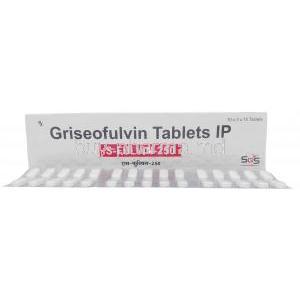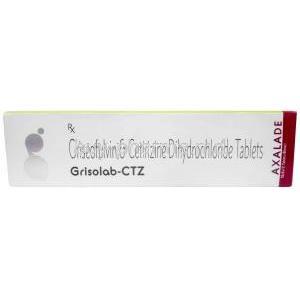1. Introduction to Noxafil Oral Suspension
Noxafil, known generically as posaconazole, is a potent broad-spectrum antifungal agent belonging to the triazole class. It is primarily indicated for the prevention and treatment of serious fungal infections in immunocompromised individuals.
Approved by the U.S. Food and Drug Administration (FDA), Noxafil has established its place in antifungal pharmacotherapy since its initial authorization. Marketed under the brand name Noxafil by Merck & Co., it is available in multiple formulations including oral suspension, delayed-release tablets, and intravenous injections. This article focuses on the oral suspension form, which offers flexibility for patients unable to tolerate tablets or requiring precise dosing.
The clinical value of Noxafil Oral Suspension lies in its ability to prevent and control invasive fungal infections in patients with severely weakened immune systems—such as those undergoing chemotherapy, organ transplantation, or suffering from advanced HIV/AIDS.
2. Medical Uses of Noxafil Oral Suspension
2.1 FDA-Approved Indications
- Prophylaxis of invasive Aspergillus and Candida infections in patients with hematologic malignancies or hematopoietic stem cell transplant (HSCT) recipients experiencing graft-versus-host disease.
- Treatment of oropharyngeal candidiasis, particularly in cases refractory to first-line agents such as fluconazole.
2.2 Off-Label and Investigational Uses
- Empirical antifungal therapy in febrile neutropenic patients unresponsive to broad-spectrum antibiotics.
- Treatment of resistant molds including Fusarium and Zygomycetes species in severely ill individuals.
- Prophylactic use in HSCT recipients not meeting formal guideline criteria but deemed high-risk by clinical judgment.
- Use in intensive care unit (ICU) patients with unexplained fungal sepsis or colonization.
3. Mechanism of Action: How Noxafil Works in the Body
Posaconazole exerts its antifungal activity through the inhibition of the fungal enzyme lanosterol 14α-demethylase. This enzyme plays a critical role in the biosynthesis of ergosterol, a vital component of the fungal cell membrane.
By depleting ergosterol and disrupting membrane integrity, Noxafil impairs fungal cell growth and replication. This action leads to cell lysis and death, particularly in susceptible fungal pathogens. The agent exhibits a broad spectrum of action against Candida species, Aspergillus species, and other rare but aggressive molds.
4. Dosage and Administration Guidelines for Noxafil Oral Suspension
4.1 Standard Dosing for Adults
- Prophylaxis: 200 mg (5 mL) three times daily with food.
- Oropharyngeal candidiasis: Loading dose of 100 mg (2.5 mL) twice daily on Day 1, followed by 100 mg once daily.
Dosing differs depending on the indication and patient response. Prophylactic regimens require higher total daily doses compared to localized infections.
4.2 Special Dosing Considerations
- For patients with gastrointestinal issues (e.g., mucositis, diarrhea), absorption may be impaired, warranting therapeutic drug monitoring.
- Administer with a full meal or nutritional supplement to maximize bioavailability.
- Routine plasma level monitoring is advised in high-risk patients to ensure therapeutic concentrations.
5. Composition and Pharmaceutical Properties
- Active ingredient: Posaconazole
- Inactive ingredients: Polysorbate 80, sodium benzoate, artificial cherry flavor, and other excipients for stability and palatability.
- The suspension is a white, cherry-flavored liquid with a concentration of 40 mg/mL, designed for oral dosing precision.
- Supplied in 105 mL bottles with an oral dosing syringe included.
6. Proper Storage Instructions
- Store at 2°C to 8°C (36°F to 46°F) until dispensed. After dispensing, the bottle may be kept at room temperature up to 25°C (77°F).
- Do not freeze. Protect from excessive heat and moisture.
- Use within 4 weeks after opening.
- Keep the bottle tightly closed when not in use to maintain stability.
7. Drug Interactions and Contraindicated Combinations
7.1 Major Drug Interactions
- CYP3A4 inhibitors and inducers: Can significantly alter posaconazole levels and efficacy. Examples include rifampin, phenytoin, and carbamazepine.
- Immunosuppressants: Posaconazole increases blood levels of tacrolimus and cyclosporine, requiring dose adjustment and frequent monitoring.
- QT-prolonging agents: Co-administration may heighten the risk of life-threatening arrhythmias.
7.2 Contraindicated Medications
- Ergot alkaloids (e.g., ergotamine, dihydroergotamine) due to risk of ergotism.
- Statins metabolized by CYP3A4 (e.g., simvastatin, lovastatin) due to increased risk of rhabdomyolysis.
- Sirolimus – combined use is contraindicated due to marked elevation in sirolimus levels.
8. Warnings and Contraindications for Use
8.1 Absolute Contraindications
- History of hypersensitivity to posaconazole or any of the oral suspension components.
- Concurrent use of contraindicated CYP3A4 substrates that may result in serious adverse reactions.
8.2 Black Box and Critical Warnings
- QT Interval Prolongation: Noxafil may cause significant QT prolongation, especially when combined with other pro-arrhythmic drugs or in the setting of electrolyte abnormalities.
- Hepatotoxicity: Elevations in liver enzymes, bilirubin, and clinical hepatitis have been reported. Liver function tests should be monitored before and during therapy.
9. Common and Serious Side Effects
9.1 Common Adverse Reactions
Noxafil Oral Suspension may cause mild to moderate side effects in some patients, particularly during the initial stages of therapy. These reactions are typically transient and resolve with continued use or supportive care.
- Nausea, vomiting, and diarrhea: Gastrointestinal discomfort is among the most frequently reported effects. Ensuring the drug is taken with food may help mitigate these symptoms.
- Headache and dizziness: These neurologic symptoms may appear during dose escalation or with prolonged use.
- Fever and fatigue: Generalized malaise can occur, particularly in immunocompromised individuals undergoing antifungal prophylaxis.
9.2 Serious or Rare Adverse Events
Though uncommon, Noxafil may lead to severe complications requiring immediate medical intervention.
- Hepatotoxicity: Clinically significant liver enzyme elevations and cases of hepatitis have been observed. Discontinuation may be necessary in the presence of jaundice or transaminase levels exceeding five times the upper limit of normal.
- Hypokalemia and electrolyte imbalance: Posaconazole may cause profound potassium loss, necessitating correction prior to treatment initiation and periodic monitoring thereafter.
- Anaphylactic reactions and severe skin rashes: Rare hypersensitivity reactions include urticaria, angioedema, and exfoliative dermatitis. Prompt cessation and emergency care are warranted in such cases.
10. Careful Administration and Monitoring Guidelines
10.1 Patients with Hepatic or Renal Impairment
Special caution is advised in individuals with pre-existing hepatic or renal dysfunction.
- Liver function tests should be conducted before initiating therapy and monitored at regular intervals throughout treatment.
- Although no dosage adjustment is typically required in renal impairment, there is limited clinical data on the safety of Noxafil in patients with severe kidney dysfunction. Vigilant observation is recommended.
10.2 Patients at Risk of QT Prolongation
Due to its potential to prolong the QT interval, Noxafil should be used judiciously in susceptible populations.
- Obtain a baseline ECG prior to starting therapy and perform follow-up assessments, especially in those receiving other QT-prolonging drugs.
- Serum potassium, magnesium, and calcium levels should be normalized before treatment to reduce arrhythmic risk.
11. Important Safety Precautions Before and During Treatment
To ensure therapeutic efficacy and minimize adverse events, adherence to the following precautions is essential:
- Conduct regular monitoring of liver enzymes and electrolytes, especially during long-term use or in high-risk patients.
- Administer with a full meal or nutritional supplement to improve bioavailability of the oral suspension.
- Grapefruit juice and alcohol may interfere with drug metabolism and should be avoided during therapy.
12. Use in Elderly Patients
Older adults often exhibit altered pharmacokinetics and increased sensitivity to medications, including Noxafil.
- Aging-related decline in hepatic function may heighten the risk of drug-induced liver injury. Periodic liver function testing is advised.
- Polypharmacy in this population can lead to significant drug-drug interactions. A comprehensive medication review is crucial.
- Dose adjustment may be required based on tolerability, renal clearance, and nutritional status.
13. Use During Pregnancy and Lactation
13.1 Pregnancy Considerations
Animal studies have shown evidence of fetal harm at systemic exposures similar to those achieved in human use. Consequently, Noxafil should only be administered during pregnancy if the potential benefit outweighs the potential risk.
- Not recommended for routine prophylaxis during pregnancy.
- Used with caution in life-threatening fungal infections where alternative options are unavailable.
13.2 Breastfeeding Guidelines
The excretion of posaconazole in human breast milk remains unconfirmed. However, due to the potential for serious adverse effects in nursing infants, a risk-benefit assessment is necessary.
- Consider discontinuing breastfeeding or the medication, depending on clinical priorities.
- Alternative antifungals with established safety profiles in lactation may be preferred.
14. Pediatric Use and Safety Profile in Children
Noxafil Oral Suspension has limited approval for pediatric use, primarily in patients aged 13 years and older. Clinical trials in younger age groups are ongoing but not conclusive.
- Dosing should be calculated based on body weight and adjusted according to infection severity and treatment response.
- Long-term administration may impact growth and endocrine development. Regular monitoring is encouraged.
- Close observation is advised due to the increased risk of gastrointestinal intolerance and hepatic side effects in pediatric populations.
15. Overdose Risk and Emergency Measures
Although rare, overdose with Noxafil may occur, especially in scenarios involving confusion between dosage forms or unintentional ingestion.
- Clinical manifestations may include nausea, QT prolongation, electrolyte disturbances, and hepatic enzyme elevation.
- No specific antidote exists for posaconazole overdose. Symptomatic and supportive care is the cornerstone of management.
- Gastric lavage and activated charcoal may be considered if ingestion is recent and clinically appropriate.
16. Handling Precautions and Administration Tips
- Shake the oral suspension vigorously for approximately 10 seconds before each use to ensure even drug distribution.
- Use the provided dosing syringe or calibrated measuring device for accurate measurement. Household spoons are not suitable.
- Practice hand hygiene before and after handling the medication to prevent contamination.
- Dispose of any unused or expired product following local pharmaceutical waste guidelines. Do not pour into drains or toilets.
Noxafil Oral Suspension FAQ
- What is Noxafil used for?
- When is the best time to take Noxafil?
- What is Noxafil 40 mg ml suspension?
- What food interactions with Noxafil?
- What is the generic for Noxafil?
- What are the nursing considerations for Noxafil?
- What is the classification of Noxafil?
- Who makes Noxafil?
- What are the most common side effects of posaconazole?
- Is posaconazole hard on the kidneys?
- What foods should be avoided when taking posaconazole?
- What is noxafil used for?
- Does posaconazole need to be refrigerated?
- What is the purpose of Noxafil?
- How long is the treatment for posaconazole?
What is Noxafil used for?
Noxafil works well in treating fungal infections in individuals who have limited treatment choices. It can also help prevent specific infections in patients with weakened immune systems.
When is the best time to take Noxafil?
With or within 20 minutes of a full meal
What is Noxafil 40 mg ml suspension?
Noxafil Oral Suspension is recommended for preventing Aspergillosis and Candidiasis infections in patients aged 13 and above.
What food interactions with Noxafil?
Make sure to steer clear of using antacids or taking calcium or magnesium supplements within a two hour window of consuming this medication.
What is the generic for Noxafil?
Posaconazole
What are the nursing considerations for Noxafil?
Keep an eye out for any serious infections in individuals who are unable to consume a complete meal or handle an oral nutritional supplement well, or those with significant kidney issues, or experiencing severe diarrhea and vomiting, or weighing more than 120 kilograms.
What is the classification of Noxafil?
Triazole antifungal agent
Who makes Noxafil?
Merck Sharp & Dohme Corp.
What are the most common side effects of posaconazole?
- Fever
- Headache
- Dizziness
- Edema
- Tiredness
- Vomiting
Is posaconazole hard on the kidneys?
No
What foods should be avoided when taking posaconazole?
A high fat content in meals can potentially increase the levels of posaconazole exposure and concentrations.
What is noxafil used for?
Noxafil is a type of medication for fighting fungal infections that may occur in parts of your body or as a preventive measure against them spreading further.
Does posaconazole need to be refrigerated?
Yes
What is the purpose of Noxafil?
Noxafil is successful in treating fungal infections in individuals with limited treatment choices, and it can also help prevent specific infections in patients with a compromised immune system.
How long is the treatment for posaconazole?
6-8 weeks

